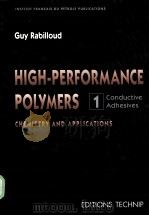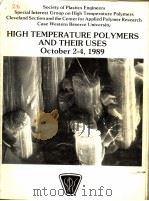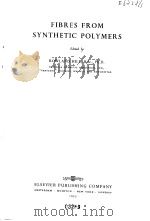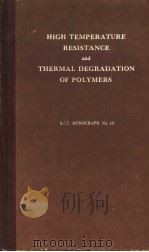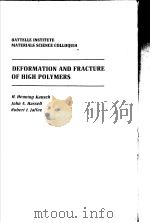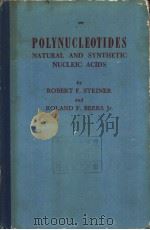《NATURAL AND SYNTHETIC HIGH POLYMERS》
| 作者 | KURT H.MEYER 编者 |
|---|---|
| 出版 | 未查询到或未知 |
| 参考页数 | 891 |
| 出版时间 | 1950(求助前请核对) 目录预览 |
| ISBN号 | 无 — 求助条款 |
| PDF编号 | 811587898(仅供预览,未存储实际文件) |
| 求助格式 | 扫描PDF(若分多册发行,每次仅能受理1册) |
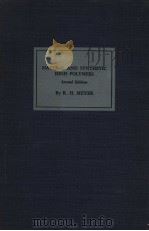
Introduction1
1.Definition and Classification of High Polymers1
2.Homologous Polymeric Series and Mixtures of Polymeric Homologues3
3.Molecule and Molecular Weight5
4.Morphological and Thermodynamic Approach to the Chemistry of High Polymers6
A.Physical and Physico-chemical Investigation of High Polymers11
Ⅰ.Investigation in Solution11
1.Characterization by Means of Solvents and Swelling Agents11
2.Determination of Molecular Weight of Dissolved High Polymers15
3.Determination of Sign of Charge on Particles and Test of Homo-geneity by Means of Electrophoresis42
4.Determination of Shape of Dissolved Particles45
Ⅱ.Investigation of the Solid State with χ-Rays48
1.Solid State of High Polymers in General48
2.Scattering of χ-Rays50
3.χ-Ray Diagrams of High Polymers69
4.Atomic Configuration of High Polymers81
Ⅲ.Investigation in Solid State by Other Optical Methods84
1.Electron Microscope84
2.Structural Analysis by Means of Birefringence Studies86
3.Investigation by Means of Polarized Infrared Radiation92
B.Inorganic High Polymers93
Ⅰ.Inorganic Chain Polymers93
1.Polymerized Sulfur(Elastic Sulfur)93
2.Polymerized Selenium97
3.Polyphosphonitrilic Chloride98
4.Polyphosphonitrilic Fluoride102
5.Equilibrium between Polymeric Forms and Forms of Lower Molecular Weight in the Case of Sulfur and Phosphonitrilic Chloride102
6.Other Inorganic Chain Polymers102
(a)Polysilene and Polygermanene102
(b)Silicon Disulfide103
(c)Polymeric Alkyl Silicon Oxides and Polymeric Esters of Sili-cic Acid104
(d)Asbestos-like Sulfur Trioxide105
(e)Sulfur Monoxide106
(f)Selenium Dioxide106
(g)Antimony Trioxide106
7.Chain Polymers with Extended Anions106
(a)Pyroxene Group108
(b)Amphibole Group108
(c)Chrysotile109
(d)Alkali Silicates111
8.Polyphosphoric Acids111
9.Polyborates113
Ⅱ.Inorganic Net Polymers113
1.Graphite and Its Derivatives113
2.Boron Nitride120
3.Black Phosphorus120
4.Calcium Silieide and Siloxene121
5.Silicates with Layer Lattices:Talc,Clays,and Mica122
Ⅲ.Inorganic Polymers with Three-Dimensional Primary Valence Lattices133
1.Neutral Space Network Polymers133
(a)Diamond,Silicon,Boron133
(b)Silicon Dioxide134
2.Three-Dimensional Polymers with Extended Anions135
(a)Crystalline Silicates:Feldspars,Ultramarines,and Zeolites135
(b)Structure of Glasses137
C.High Polymeric Hydrocarbons and Their Derivatives141
Ⅰ.Introduction141
Ⅱ.Polymerization143
1.Polymerization Reaction143
2.Homogeneity and Constitution of Polymers151
3.Copolymers153
4.Technically Important Properties of Polymers in Relation to Constitution157
Ⅲ.Saturated High Polymeric Hydrocarbons and Their Derivatives159
1.Polymeric Paraffins159
2.Halogenated Polyethylenes164
3.Polyvinyl Esters168
4.Polyvinyl Alcohol and Polyvinyl Ethers170
5.Polymers from Allyl Alcohol and Allyl Esters173
6.Polyolefin Aldehydes and Ketones173
7.Polyacrylic Acid and Its Derivatives175
8.Polystyrene(Polymerized Vinylbenzene)178
9.Polyvinyl Amines and Other Polyvinyl Derivatives181
10.Crystallizability of Vinyl Polymers184
11.Poly-p-xylylene184
Ⅳ.Rubber and Gutta-Percha185
1.Constitutional Formula of Rubber185
2.Molecular Weight of Rubber186
3.χ-Ray Analysis of Structure of Rubber188
4.Constitutional Formula and Molecular Weight of Gutta-Percha and Balata195
5.χ-Ray Analysis of the Structure of Gutta196
6.Chemical Reactions of Rubber and Gutta-Percha200
7.Some Points in Manufacture of Rubber209
Ⅴ.Synthetic or"Chemical"Rubbers213
1.Problem of Artificial Rubber213
2.Butadiene and Its Polymerization215
3.Copolymers217
4.Polymeric 2-Chlorobutadiene,Polychloroprene,Neoprene221
5.High Polymers of Other Butadiene Derivatives222
Ⅵ.States of Aggregation of Chain Polymers223
1.Solid Amorphous State223
(a)Second-Order Transition224
(b)Brittle Point225
(c)Theory of Second-Order Transition226
2.Rubberlike State226
(a)Molecular Arrangement226
(b)Kinetic Theory of Rubberlike Elasticity227
(c)Behavior of Segments228
(d)Anisotropy of Elastomers229
(e)Effect of Cross Linking230
(f)Limit of Elastic Deformation230
(g)Effect of Swelling on Form of Chains232
3.Plastic State232
4.Crystallization and Fusion in Rubber and Other High Polymers232
D.Polymeric Ethers,Esters,Sulfides,etc.239
Ⅰ.Condensation Reaction239
1.Polycondensation239
2.Cocondensation243
3.Polyaddition243
Ⅱ.Polymeric Ethers243
1.Polyoxymethylene243
2.Polymeric Glycol Formals245
3.Polyethylene Oxide245
4.Polytetramethylene Oxide and Polydecamethylene Oxide247
Ⅲ.Polymeric Acid Anhydrides248
Ⅳ.Polymeric Esters248
1.Linear Esters248
2.Artificial Resins and Compositions from Glycerol and Polybasic Acids(Alkyd Resins)251
3.High Polymers from Fatty Oils252
4.Basic Polyesters254
5.Polyphosphoric Acid Esters254
(a)Synthetic Esters254
(b)Nucleic Acids254
6.Polymeric Borates,Silicates,and Sulfates258
7.Epoxy Polymers258
Ⅴ.Polymeric Sulfides,Sulfones,and Imines259
1.Polymeric Sulfides and Polysulfides259
2.Polyethylene Sulfones261
3.Polymeric Imines262
Ⅵ.Polymeric Amides263
1.Products of Polymerization of Amino Acids263
2.Other Polyamides264
(a)Polymeric Amides from Diearboxylic Acids and Diamines264
(b)Industrial Applications of Superpolyamides267
(c)Polymeric Urethans and Ureas269
(d)Industrial Applications of Superpolyurethans270
3.Products of Condensation of Formaldehyde and Amides271
(a)Formaldehyde and Urea(Aminoplasts)271
(b)Formaldehyde and Cyanuric Triamide(Melaminoplasts)274
Ⅶ.Products of Condensation of Aldehydes and Phenols274
1.Condensation Products of Formaldehyde and Phenols(Pheno-plasts)274
2.Condensation Products of Furfural and Phenols278
3.Manufaeture and Applications of Formaldehyde-Urea and For-maldehyde-Phenol Plastics278
4.Natural Condensation Products of Phenols279
Ⅷ.Condensation Products of Formaldehyde and Aniline(Anilinoplasts)279
Ⅸ.Condensation Products as Ion Exchangers281
E.Cellulose and Its Derivatives283
Ⅰ.Constitution and Texture of Cellulose283
1.Constitution of Cellulose283
2.Preparation and Methods of Testing292
3.Crystalline Structure of Cellulose298
4.Size,Shape,and Arrangement of Mieelles310
5.Birefringence and Optical Activity of Cellulose322
Ⅱ.Modes of Reaction of Cellulose324
1.Micellar Surface Reactions325
2.Intramicellar Reactions336
Ⅲ.Compounds of Cellulose344
1.Addition Compounds with Bases,Acids,and Salts344
(a)Action of Ammonia and Organic Bases on Cellulose344
(b)Action of Sodium Hydroxide on Cellulose345
(c)Swelling and Solution of Cellulose in Caustic Soda348
(d)Mercerization350
(e)Action of Other Alkalis on Cellulose351
(f)Cellulose and Cuprammonium Oxide Solutions351
(g)Action of Mineral Acids and Salts on Cellulose354
(h)Crystalline Addition Products of Acids and Salts with Cellu-lose357
2.Viscose359
3.Esterification of Cellulose365
(a)Nitration366
(b)Cellulose Trinitrate370
(c)Molecular Compounds of the Trinitrate371
(d)Products of Moderate Degree of Nitration372
(e)Denitration373
(f)Acetylation of Cellulose374
(g)Other Cellulose Esters377
4.Cellulose Ethers378
5.Commercial Applications of Cellulose Esters and Ethers381
Ⅳ.Mechanical Properties of Cellulose and Its Derivatives387
1.Tensile Strength387
2.Elastic Properties393
3.Plastic Properties395
Ⅴ.Cellulose Breakdown398
1.Mechanical Breakdown398
2.Chemical Breakdown398
F.Animal and Vegetable Polysaccharides and Lignin407
Ⅰ.Hemicelluloses:Pentosans,Hexosans,and Polyuronic Acids407
1.Hemicelluloses in General407
2.Method for Determination of Constitution of Polysaccharides408
3.Pentosans412
(a)Xylan412
(b)Araban414
4.Hexosans414
(a)Glucosans414
(b)Galactans415
(c)Mannans415
5.Polyuronie Acids417
Ⅱ.Lignin418
1.Methods for Isolation of Lignin and Its Derivatives418
2.Constitution of Lignin422
Ⅲ.Pectins428
1.Occurrence and Isolation of Pectins428
2.Constitution of Pectins430
3.Micelle Formation in Solution and Gelation434
4.Commercial Pectins436
5.Pectinases438
Ⅳ.Plant Gum and Mucilages438
1.Gum Arabic439
2.Other Gums440
3.Plant Mucilages440
4.Carbohydrates from Algae441
Ⅴ.Carbohydrates from Microorganisms443
1.Yeast Polysaccharides443
2.Polysaccharides from Species of Penicillium444
3.Bacterial Glucosans444
4.Other Bacterial Polysaccharides445
5.Polysaccharides from Pathogenic Bacteria446
Ⅵ.Chitin and Other Polysaccharides Containing Amino Sugars448
1.Chitin448
2.Mixed Polysaccharides Containing Hexosamine Residues453
(a)Chondroitinsulfuric Acid453
(b)Mucoitinsulfuric Acid and Hyaluronic Acid454
(c)Heparin455
Ⅶ.Starch and Other Reserve Carbohydrates456
1.Occurrence and Composition of Starch Grains456
2.Constitution and Properties of Amylose459
3.Constitution and Properties of Amylopectin467
4.Fine Structure of Starch Grains471
5.Starch Pastes475
6.Addition Compounds of Starch479
7.Starch Ethers and Esters481
8.Chemical Breakdown of Starch482
9.Enzymatic Breakdown of Starch483
(a)Amylases483
(b)Action of α-Amylase484
(c)Action of β-Amylase485
(d)Combined Action of α-andβ-Amylases in Malt486
(e)Phosphorolysis and Synthesis487
(f)Amylosucrase,Amylomaltase,and Macerans Amylase488
10.Glycogen489
11.Other Glucosans492
(a)Lichenin492
(b)Soluble Glucosans493
12.Galactogen494
13.Mannans494
(a)Salep Mannan494
(b)Konjak Mannan495
(c)Carubin495
14.Inulin and Other Fructosans496
15.Other Soluble Reserve Polysaccharides498
G.Proteins499
Ⅰ.Introduction:Fibrillar and Globular Proteins499
Ⅱ.Constitution of Proteins500
1.Structural Units and Linkage500
2.Homogeneity of Proteins502
3.Molecular Weight of Proteins505
4.Determination of Constitution514
(a)Analysis of Amino Acid Content514
(b)Determination of Order of Arrangement of Amino Acid Resi-dues516
(c)Results of Constitutional Analysis517
5.Cross-Linked Proteins519
Ⅲ.Fibrillar Proteins520
1.Higher Peptides of Glycine and Its Homologues520
2.Silk Fibroin521
3.Collagen and Gelatin530
4.Elastoidin542
5.Ichthyocol543
6.Elastic Fibers543
7.Keratins545
8.Muscle Proteins and Their Significance in Process of Muscular Contraction559
9.Fibrin,Fibrinogen,and Stroma Protein572
10.Other Fibrillar Proteins573
Ⅳ.Globular Proteins573
1.General Introduction and Classification573
2.Albumins and Globulins574
(a)Albumins574
(b)Globulins576
(c)Proteins of Blood Plasma577
(d)Plastics from Soybean Protein578
3.Prolamines578
Ⅴ.Conjugated Proteins or Proteids579
1.Phosphoproteids579
(a)Casein and Vitellin579
(b)Artificial Masses and Artificial Fibers from Casein580
2.Chromoproteids581
(a)Hemoglobin581
(b)Hemocuprein and Hepatocuprein584
(c)Blood Pigments of Invertebrates584
(d)Pigments of Red Algae:Phycoerythrins and Phyeocyanins586
(e)Chlorophyll,Chloroplastin,and Phylloehlorin587
(f)Ferritin and Apoferritin588
3.Nucleoproteids588
4.Glucoproteids589
5.Lipoproteids590
Ⅵ.Proteins of Marked Biological Activity592
1.Proteohormones592
(a)Secretin592
(b)Insulin592
(c)Hormones of the Hypophysis(Pituitary Gland)594
(d)Other Proteohormones594
2.Toxins595
(a)Toxalbumins595
(b)Snake Venoms596
(c)Bacterial Toxins596
3.Antibodies507
4.Natural Blood Agglutins;Blood Groups603
Ⅶ.Proteins with Enzymatic Properties(by P.Bernfeld)604
1.Nonconjugated Enzymes605
(a)Urease605
(b)Carboxypeptidase605
(c)Pepsin and Pepsinogen605
(d)Trypsin,Trypsinogen,and Trypsin Inhibitor606
(e)Chymotrypsin and Chymotrypsinogen607
(f)Rennin(Rennet Enzyme)607
(g)Papain and Ficin,Mexicain,Asclepain608
(h)Ribonuclease and Desoxyribonuclease608
(i)α-Amylase609
(j)β-Amylase609
(k)Aldolase610
(l)Lipoxidase610
2.Conjugated Enzymes with Organic Compounds as Coenzymes610
(a)Ketocarboxylase611
(b)Alloxazine Proteid(Flavin Enzyme)612
(c)Alloxazine Adenine Proteids613
(d)Pyridoxal Proteids614
(e)Adenosine Proteids615
(f)Pyridine Proteids615
(g)Various Enzyme Proteids618
(h)Iron Porphyrin Proteids620
(i)Enzyme Activity Resulting from Combined Action of Sev-eral Component Enzymes623
3.Metal Proteids with Enzyme Properties624
(a)Copper Proteids624
(b)Zinc Proteids625
(c)Magnesium Proteids625
(d)Manganese Proteids628
4.Mechanism of Enzyme Catalysis628
Ⅷ.Viruses and Virus Proteins630
1.Size of Virus Particles630
2.Tobacco Mosaic Virus632
3.Shape of Particles of Tobacco Mosaic Virus633
4.Other Viruses634
Ⅸ.Crystal Structure of Globular Proteins636
Ⅹ.Behavior of Proteins in Solution:Solubility,Association,Flocculation,and Denaturation640
1.Significance of Individual Groups for Solubility640
2.Influence of Salts644
3.Hydration of Proteins647
4.Deviations from van't Hoff's Law.Viscosity648
5.Association of Protein Molecules.Molecular Compounds651
6.Denaturation653
H.Properties of High Polymers in Solution(with the collaboration of A.J.A.VAN DER WYK)659
Ⅰ.Thermodynamics and Statistics of Binary Systems659
1.Introduction659
2.Thermodynamic and Statistical Quantities661
3.Methods for Measurement of Partial Thermodynamic Quantities for Binary Mixtures667
Ⅱ.Experimental Results for Substances of Low Molecular Weight669
1.Mixtures of Substances of Equal Molecular Size669
(a)Athermal Mixtures669
(b)Endothermal and Exothermal Mixtures669
(c)Dependence of ΔH on Temperature672
2.Mixtures Involving Molecules of Different Sizes673
Ⅲ.Mixtures Containing a High Polymer Component676
1.Globular and Fibrillar High Polymers676
2.Free Energy of Solution and Swelling of Chain Polymers678
3.Heat and Entropy of Solution and Swelling683
4.Phenomena of Swelling689
5.Statistical Approach of Abnormal Entropy of Mixing692
6.Mixtures Containing a Globular Polymer Component696
Ⅳ.State of High Polymers in Solution698
1.Solvates and Associates in Solution of Compounds of Low Molec-ular Weight698
2.Solvates and Associates of Globular Polymers(Proteins)701
3.Nature of Solutions of Fibrillar Polymers702
(a)Chain Polymer Solutions as Swollen Solids702
(b)Formation of Chain Polymer Solvates and Associates703
(c)Hysteresis Phenomena and Formation of Supersaturated Unstable Solutions704
Ⅴ.Equilibria in Solution705
1.Chain Length and Partition between Two Phases705
2.Chain Length and Solubility708
(a)Solubility of Amorphous Polymers708
(b)Fractional Precipitation710
(c)Influence of Electrolytes on Solubility711
(d)Solubility of Crystalline High Polymers712
(e)Solid Phase Rule715
3.Influence of Individual Groups on Solubility715
4.Gelation716
I.Elasticity,Viscosity,and Plasticity of High Polymers(with the collaboration of C.WEISSENBERG and A.J.A.VAN DER WYK)721
Ⅰ.Elasticity of High Polymers721
1.Thermodynamics721
2.Experimental Results727
3.Moduli of Elasticity732
Ⅱ.Theoretical Treatment of Viscosity741
1.Relaxation741
2.Laws of Friction for Liquids742
3.Continuum Mechanics of Plastoelastic Bodies744
4.Molecular Theory of Viscosity of Pure Liquids753
Ⅲ.Experimental Determination of Viscosity755
1.Methods of Measurement755
2.Flow Curve758
3.Measurement of Viscosity by Means of Oscillation Damping761
Ⅳ.Experimental Results in Homogeneous Systems762
1.Behavior of Pure Liquids762
2.Viscosity of Mixtures of Low Molecular Compounds763
3.Viscosity of Chain Polymers766
4.Solutions of Chain Polymers776
Ⅴ.Viscosity of Suspensions and Emulsions783
1.Hydrodynamic Theories783
2.Application to High Polymers787
Ⅵ.Viscosity and Constitution787
1.Viscosity and Constitution of Pure Liquids787
2.Viscosity and Constitution for Dissolved Substances788
Ⅶ.Optical Behavior of Streaming Liquids and Deformed Amorphous Solids789
1.General Remarks Concerning Double Refraction Due to Orienta-tion789
2.Flow Birefringence of Liquids of Low Molecular Weight790
3.Optical Behavior of Streaming Solutions of Chain Polymers793
4.Birefringence of Deformed Elastoplastic Chain Polymers794
5.Flow Birefringence of Suspensions795
J.Films,Foils and Membranes797
Ⅰ.Thin Films on Liquid Surfaces797
1.Apparatus797
2.Films of Long-Chain Fatty Acids and Alcohols798
3.Monomolecular Films of High Polymers799
Ⅱ.Foils and Membranes801
1.Amorphous Foils801
2.Cellulose Foils802
3.Foils from Cellulose Esters804
Ⅲ.Permeability of Foils and Membranes805
1.Permeability of Amorphous Foils805
2.Permeability of Membranes to Nonelectrolytes808
3.Permeability of Membranes to Ions808
(a)Selective Ionic Permeability809
(b)Quantitative Theory of Selectivity811
(c)Membrane Potential in the Study of Membranes813
(d)Selective Permeability for Hydrogen Ions815
(e)Analysis of a Membrane Consisting of Layers816
(f)Examples of Synthetic Selective Membranes817
(g)Examples of Natural Selective Membranes818
(h)Changes in Permeability and Selectivity819
Ⅳ.Phenomena Observed in the Passage of Current through Selective Membranes819
1.Changes in Concentration819
2.Changes in pH820
Ⅴ.Bioelectric Phenomena821
1.Resting Potentials821
2.Action Currents as Phenomena Attendant upon Chemical Re-actions822
K.Molecular Structure of Animal and Plant Tissues825
Ⅰ.Micellar Theory and Chain Molecule Theory826
1.Micellar Theory826
2.Chain Molecule Theory826
Ⅱ.Indirect Methods for Determining Molecular Fine Structure of Living Substance828
1.Points of Linkage in the Chain Molecule Framework828
2.Linkage of Lipoids,Nucleic Acids,and Ions to Molecular Frame-work829
3.Chemical Composition and Fine Structure830
4.Physical Properties and Fine Structure831
Author Index835
Subject Index863
1950《NATURAL AND SYNTHETIC HIGH POLYMERS》由于是年代较久的资料都绝版了,几乎不可能购买到实物。如果大家为了学习确实需要,可向博主求助其电子版PDF文件。对合法合规的求助,我会当即受理并将下载地址发送给你。
高度相关资料
-
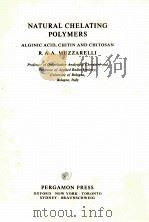
- NATURAL CHELATING POLYMERS
- 1973 PERGAMON PRESS OXFORD . NEW YORK . TORONTO
-
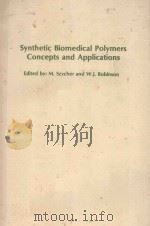
- SYNTHETIC BIOMEDICAL POLYMERS CONCEPTS AND APPLICATIONS
- 1980 TECHNOMIC PUBLISHING COMPANY INC
-
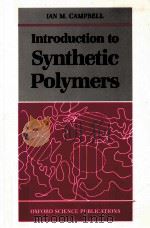
- INTRODUCTION TO SYNTHETIC POLYMERS
- 1994 OXFORD UNIVERSITY RPESS
-
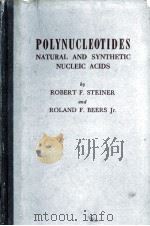
- POLYNUCLEOTIDES NATURAL AND SYNTHETIC NUCLEIC ACIDS
- 1961 ELSEVIER PUBLISHING COMPANY
-
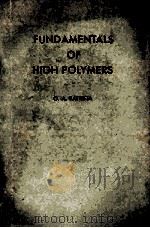
- FUNDAMENTALS OF HIGH POLYMERS
- 1958 REINHOLD PUBLISHING CORPORATION
-

- HIGH POLYMERS STRUCTURE AND PHYSICAL PROPERTIES
- 1963 PUBLISHED FOR THE PLASTICS INSTITUTE
-
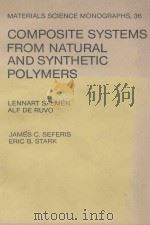
- MATERIALS SCIENCE MONOGRAPHS 36 COMPOSITE SYSTEMS FROM NATURAL AND SYNTHETIC POLYMERS
- 1986 ELSEVIER AMSTERDAM-OXFORD-NEW YORK-TOKYO 1986
提示:百度云已更名为百度网盘(百度盘),天翼云盘、微盘下载地址……暂未提供。➥ PDF文字可复制化或转WORD
